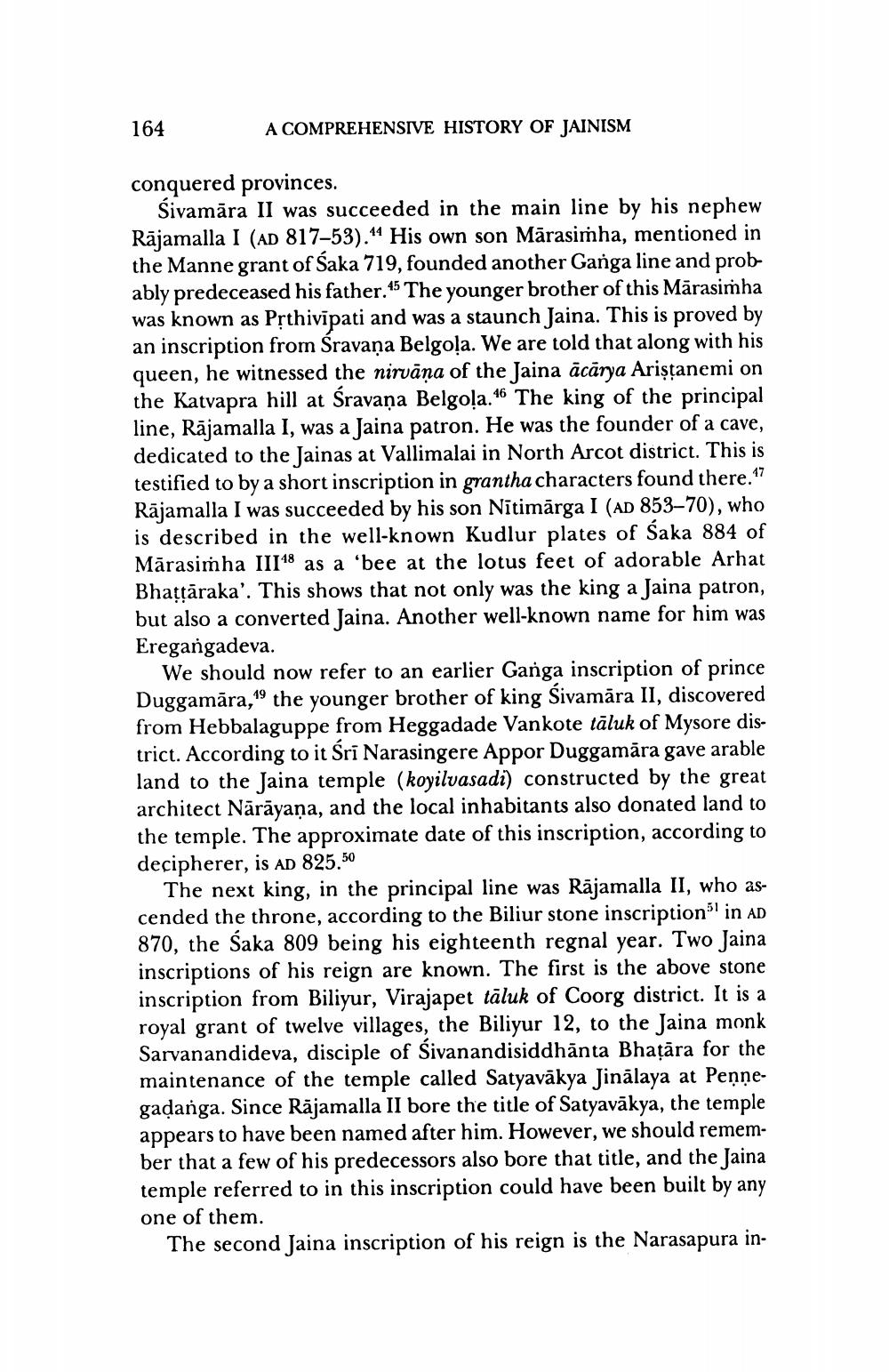________________
164
A COMPREHENSIVE HISTORY OF JAINISM
conquered provinces.
Śivamāra II was succeeded in the main line by his nephew Rājamalla I (AD 817-53). His own son Marasimha, mentioned in the Manne grant of Saka 719, founded another Ganga line and probably predeceased his father. 45 The younger brother of this Mārasimha was known as Prthivīpati and was a staunch Jaina. This is proved by an inscription from Sravana Belgola. We are told that along with his queen, he witnessed the nirvana of the Jaina ācārya Ariṣṭanemi on the Katvapra hill at Śravana Belgola.16 The king of the principal line, Rājamalla I, was a Jaina patron. He was the founder of a cave, dedicated to the Jainas at Vallimalai in North Arcot district. This is testified to by a short inscription in grantha characters found there.17 Rājamalla I was succeeded by his son Nitimärga I (AD 853-70), who is described in the well-known Kudlur plates of Śaka 884 of Mārasimha III48 as a 'bee at the lotus feet of adorable Arhat Bhaṭṭāraka'. This shows that not only was the king a Jaina patron, but also a converted Jaina. Another well-known name for him was Eregangadeva.
We should now refer to an earlier Ganga inscription of prince Duggamāra,19 the younger brother of king Śivamāra II, discovered from Hebbalaguppe from Heggadade Vankote taluk of Mysore district. According to it Śrī Narasingere Appor Duggamāra gave arable land to the Jaina temple (koyilvasadi) constructed by the great architect Nārāyaṇa, and the local inhabitants also donated land to the temple. The approximate date of this inscription, according to decipherer, is AD 825.50
The next king, in the principal line was Rājamalla II, who ascended the throne, according to the Biliur stone inscription31 in AD 870, the Saka 809 being his eighteenth regnal year. Two Jaina inscriptions of his reign are known. The first is the above stone inscription from Biliyur, Virajapet taluk of Coorg district. It is a royal grant of twelve villages, the Biliyur 12, to the Jaina monk Sarvanandideva, disciple of Śivanandisiddhanta Bhaṭāra for the maintenance of the temple called Satyavākya Jinālaya at Pennegaḍanga. Since Rājamalla II bore the title of Satyavākya, the temple appears to have been named after him. However, we should remember that a few of his predecessors also bore that title, and the Jaina temple referred to in this inscription could have been built by any one of them.
The second Jaina inscription of his reign is the Narasapura in




